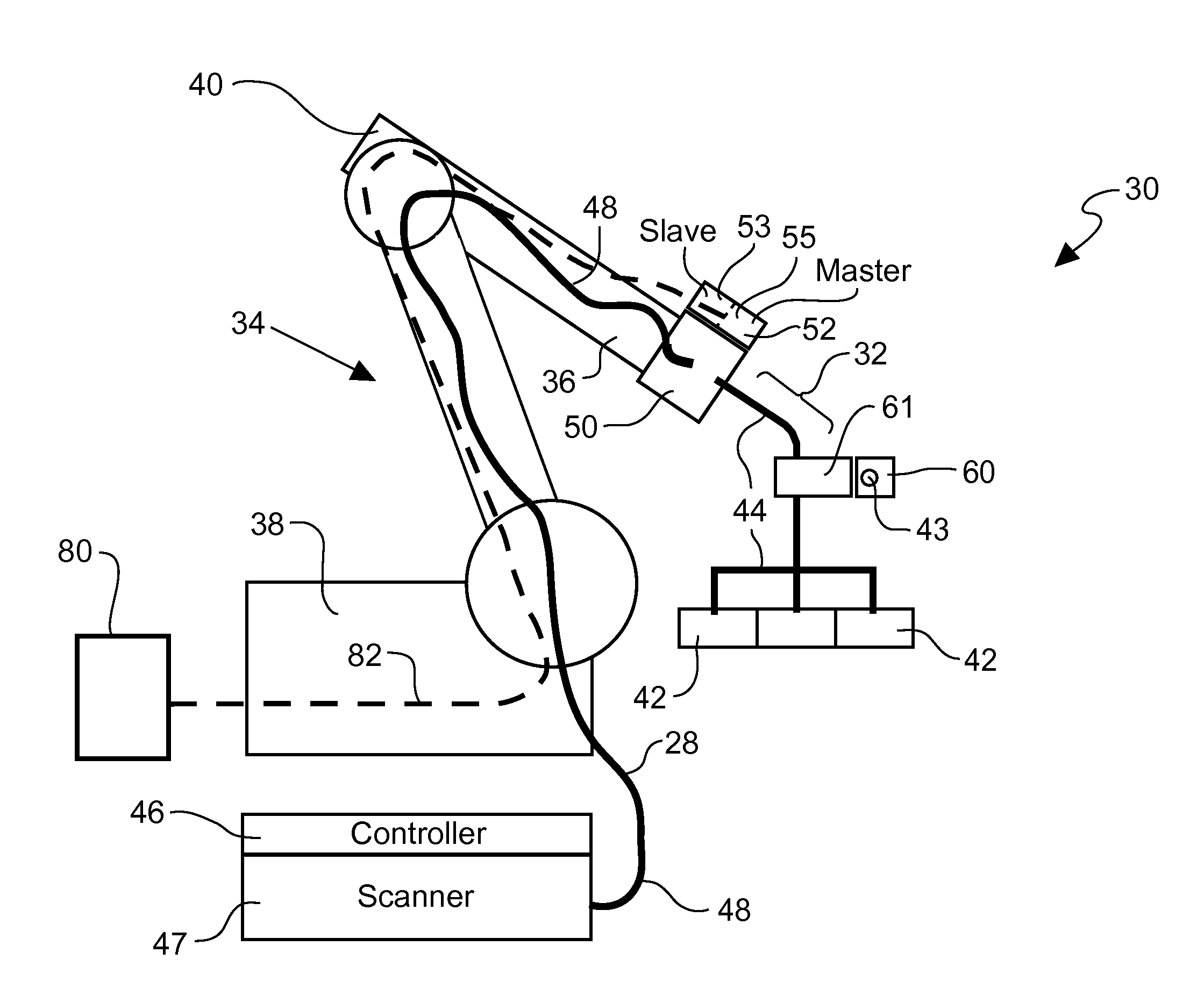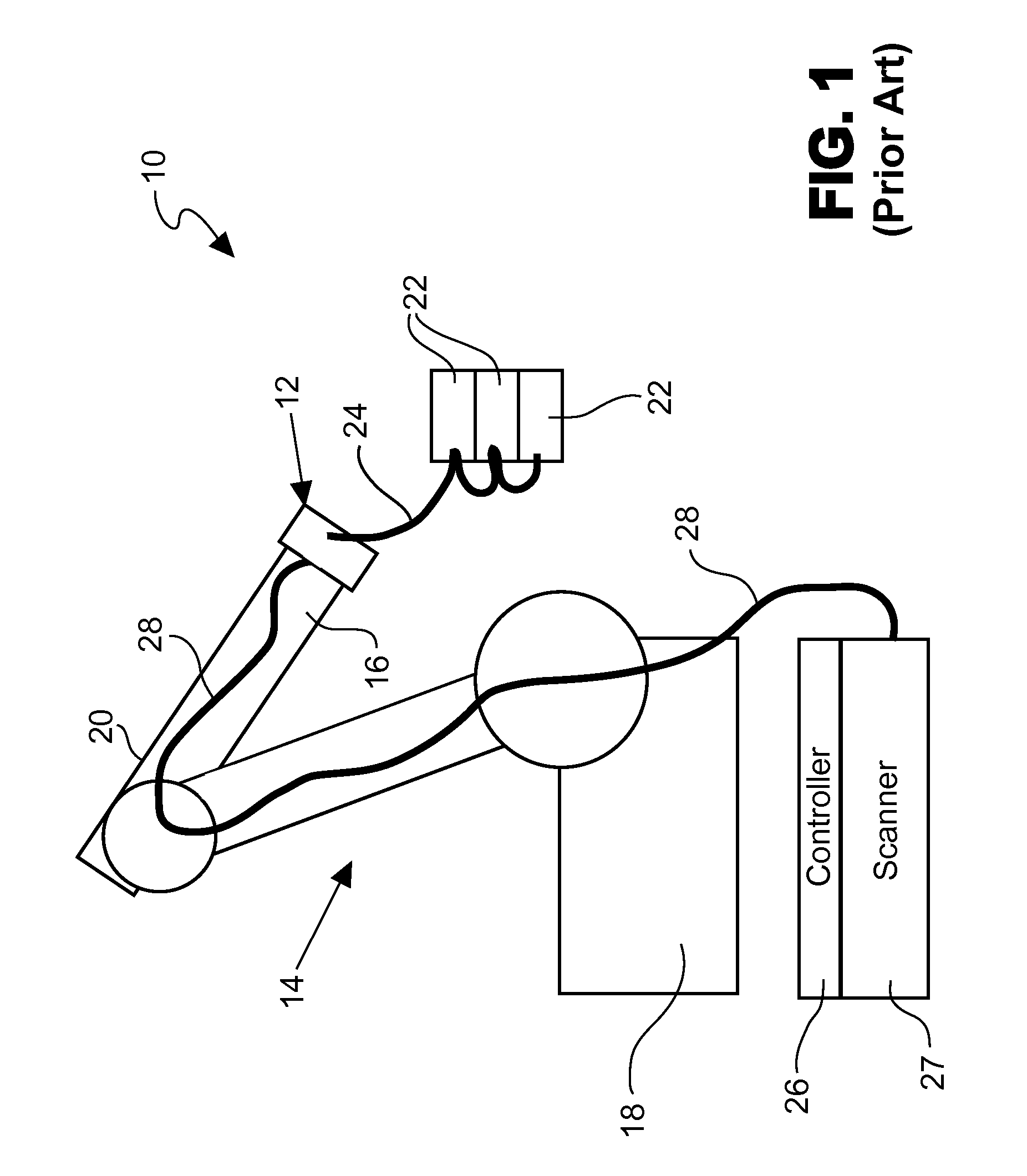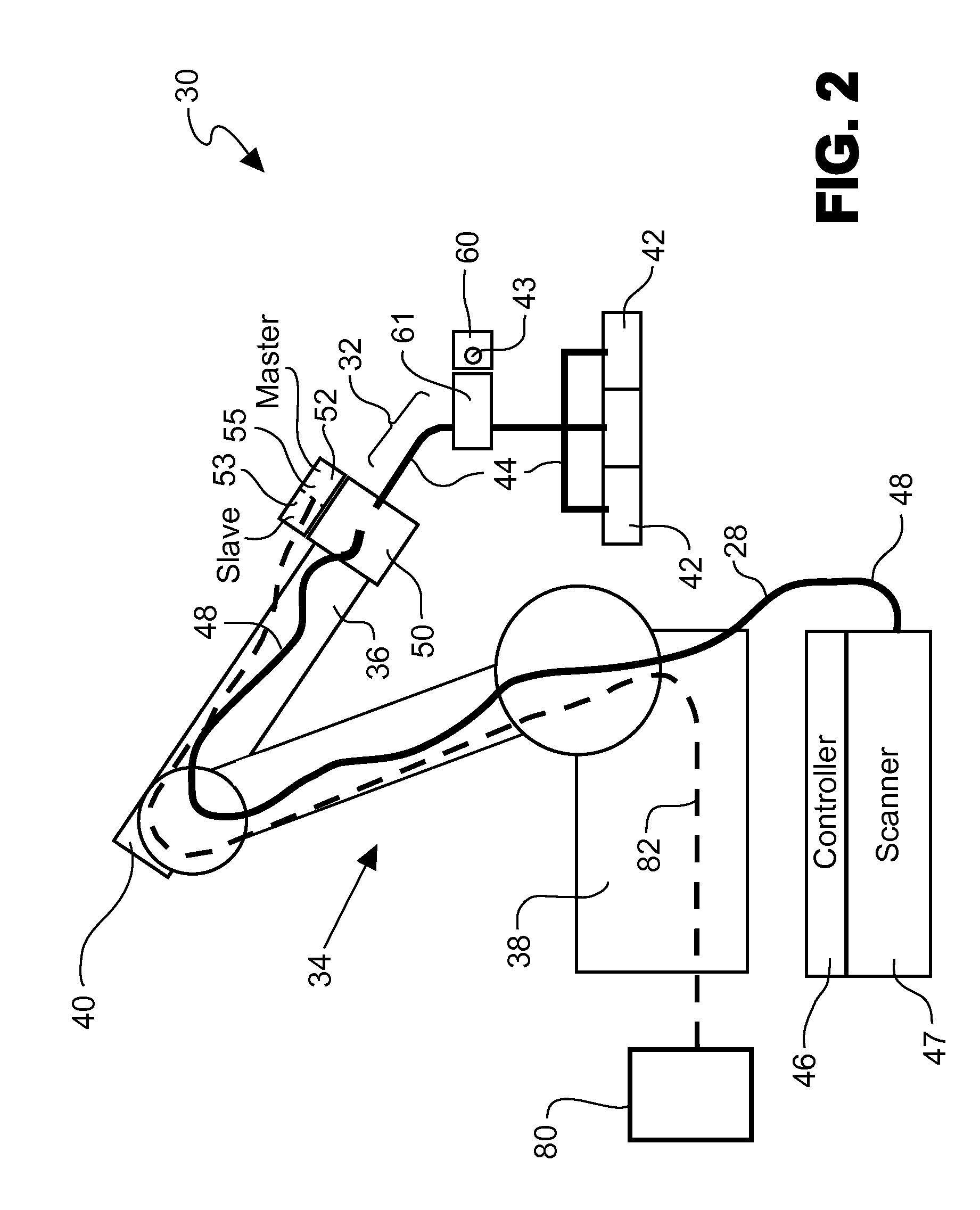Methods and systems for monitoring the operation of a robotic actuator
a robotic actuator and monitoring system technology, applied in the field of robotic arm end actuators, can solve the problems of hammering the operation and efficiency of tool changers and tools so controlled, communication protocols that are unacceptable for high-speed connections and disconnections, and protocols limited in their monitoring ability, so as to reduce the connection time
- Summary
- Abstract
- Description
- Claims
- Application Information
AI Technical Summary
Benefits of technology
Problems solved by technology
Method used
Image
Examples
Embodiment Construction
[0025]FIG. 1 is a schematic diagram of a system 10 for controlling the operation of a robotic actuator 12, for example, a tool changer, according to the prior art. As shown in FIG. 1, system 10 includes a robot 14 having an arm end 16 to which actuator 12 is typically mounted. As is typical, robot 14 includes a base 18 and an articulating arm 20 having arm end 16. As is typical of the prior art, actuator 12 is designed to engage and communicate with a plurality of tools 22, for example, manipulators, welders, and the like, which can be positioned by robot 14. Though the mechanical engagement of actuator 12 with tools 22 may be effected by a broad array of mechanical couplings, the electrical communication, for example, data and / or control signals, between actuator 12 and each of tools 22 is represented by bus 24.
[0026]According to the prior art, the operation of the robot 14, of the actuator 12, and of the tools 22 is typically controlled by a controller 26. Controller 26, for examp...
PUM
 Login to View More
Login to View More Abstract
Description
Claims
Application Information
 Login to View More
Login to View More - R&D
- Intellectual Property
- Life Sciences
- Materials
- Tech Scout
- Unparalleled Data Quality
- Higher Quality Content
- 60% Fewer Hallucinations
Browse by: Latest US Patents, China's latest patents, Technical Efficacy Thesaurus, Application Domain, Technology Topic, Popular Technical Reports.
© 2025 PatSnap. All rights reserved.Legal|Privacy policy|Modern Slavery Act Transparency Statement|Sitemap|About US| Contact US: help@patsnap.com



